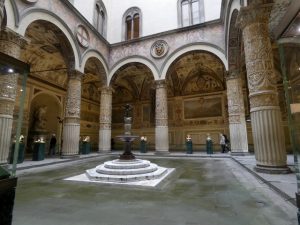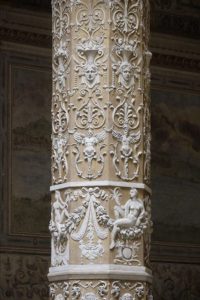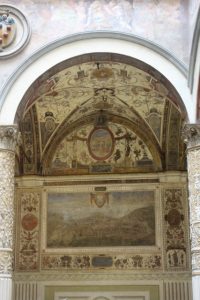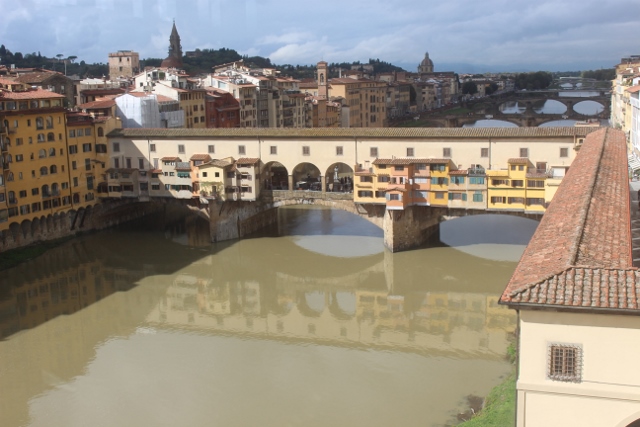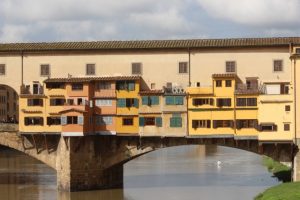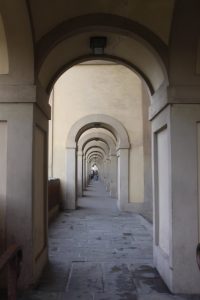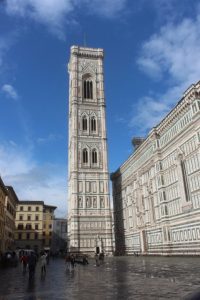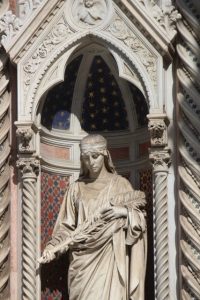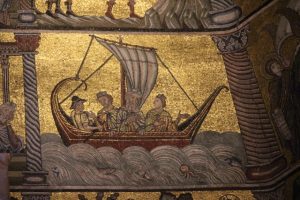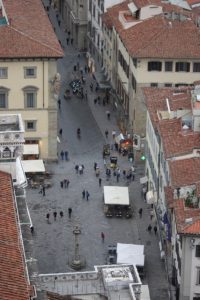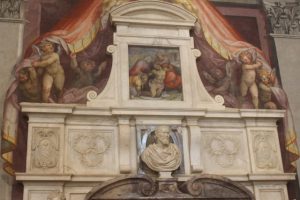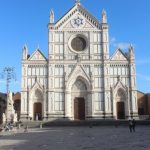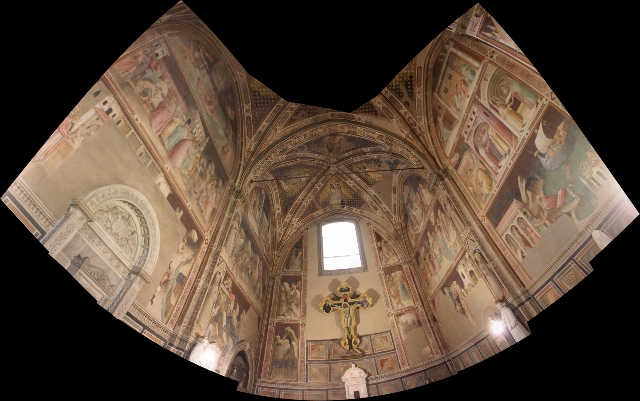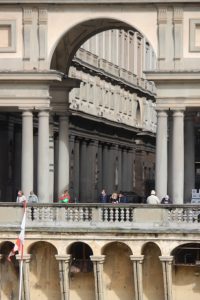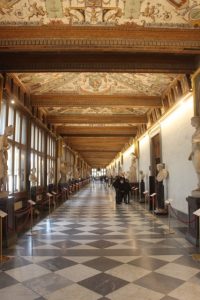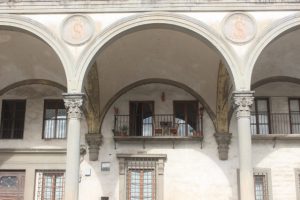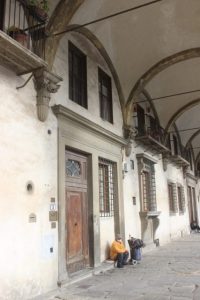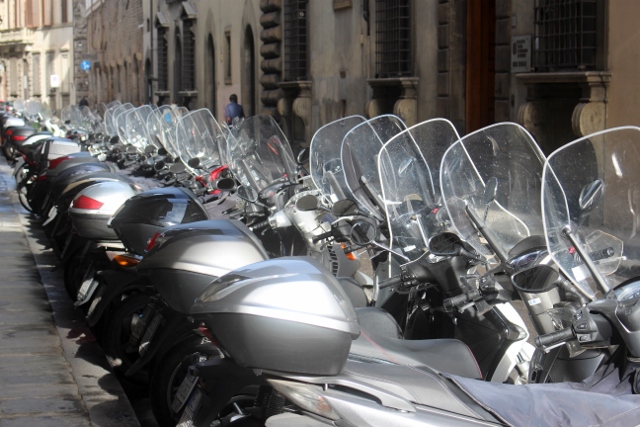Florence – or Firenze in Italian – has all the art treasures and historical architecture you expect from this major tourist city. But it lacks a bit of atmosphere.
The second major target of this trip, after Venice, is Florence – or Firenze, in Italian. Another of those Italian cities with an overdose of historical buildings and incomparable museums, usually accompanied by an overdose of tourists, too. But most of those, we anticipated, would have stayed at home in Corona times. Which was correct, although we do see a few Chinese, and also the occasional tourist group with an umbrella-wielding tour guide in front, something so far conspicuously absent from our trip.
Unfortunately, in Florence, too, it rained most of the time. Perhaps this is why we weren’t as impressed by the city in itself, despite the many old buildings, the palaces, the churches and the historic squares. Somehow, Florence didn’t have the backstreet neighbourhoods we enjoyed so much in Venice, the small terraces, the authentic restaurants – or perhaps we didn’t manage to find them. Everything is big, the cathedral and several other churches with their walls from marble, and the museum buildings, all with walls built from massive stones.
The Ponte Vecchio, of course, lovely with its small, coloured houses – but on closer look entirely populated with tourists shops selling souvenirs, leather goods, jewellery. And you know, we almost nowhere in Florence encountered a normal shop, everything was geared towards tourists, perhaps with the exception of the occasional small supermarket.
Granted, inside most of these massive buildings are impressive. The Duomo, or Catedrale di San Marco del Fiore in full, is pretty bare inside, compared to many of the churches we have seen. Which, as so often, is compensated by the next-door Battistero, the baptism chapel, impressively decorated all around with mosaics that are covering walls and ceiling.
At the end, we also we also climb up into the cupola of the Duomo. At the time this was the largest in its kind, designed by sculpturer-turned-architect Brunelleschi and completed in 1434, after his death. Some 463 steps, through narrow stairs, first to the base to admire the ceiling frescoes of The Last Judgement. Then even higher, in between the inner and outer wall of the cupola, to almost the top, where an outside gallery provides a fabulous view over entire Florence, from a vantage point even higher than the neighbouring campanile. Luckily, just before it starts raining again. Great experience, even though our guidebook says not to undertake this is you are suffering from claustrophobia or vertigo – between the two of us, that is exactly what we do, but it was worth it, nevertheless.
The Basilica della Santa Croce, further east, is also a marble construction, and on the inside better decorated than the Duomo, with a few superbly frescoed chapels next to the altar. This is also the place where many famous Italians have been buried. The floor is full of tomb stones, and along the walls are tombs for such celebrities as Michelangelo, Machiavelli, Galileo Galilei, Rossini and others.

lovely bronze sculpture, ‘The Fisher Boy’ (bronze, 1877), by Vincenzo Gemito, in the Museo Nazionale del Bargello
And then there are the I-don’t-know-how-many museums in Florence. Of which even we, during mostly rainy days, only manage to visit a few. The Galleria dell’ Academia, with Michelangelo’s most famous 5 meter high marble sculpture of David, the Museo Bargello, with an incredible collection of Renaissance sculptures (as well as small bronzes, carved ivory, a weapons’ collection, Islamic art, coins and what have you), and the incomparable Galleria degli Uffizi, in essence a visual lecture in early Renaissance Italian art history, mostly the once private collection of the family de’Medici. An incredible collection it is, and something we now actually find very interesting and appealing – we have learned that much already from this Italy journey. Will illustrate later, with separate museum entries.

the local artist Il Pontormo painted ‘Portrait of Cosimo the Elder de’Medici’ (1519-1520) – the man who made Florence
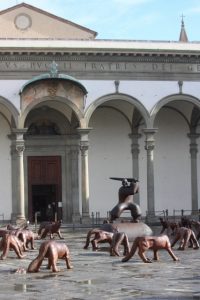
the Chinese wolves and warrior, from artist Liu Ruowang, is out of place in front of the Basilica della Santissima Annunziata
And that is about all there is to tell about our visit to Firenze. Or it must be the rather unfitting exhibition of ‘Wolves Coming’ by Chinese artist Liu Ruowang, who sculpted one hundred wolves in cast iron and a kind of Mongol warrior fending them off, and placed those on two squares in the city. With a message, of course. The generally lively market, the Mercato Centrale, was operating at half capacity only, perhaps because of Corona. And my prejudice against Italians was once more confirmed when my phone case was picked from my trouser pocket. Whilst I had my telephone in my hands! Pretty stupid of me, agreed, but even more so of the person trying to steal my telephone.
Next: Tuscany.

